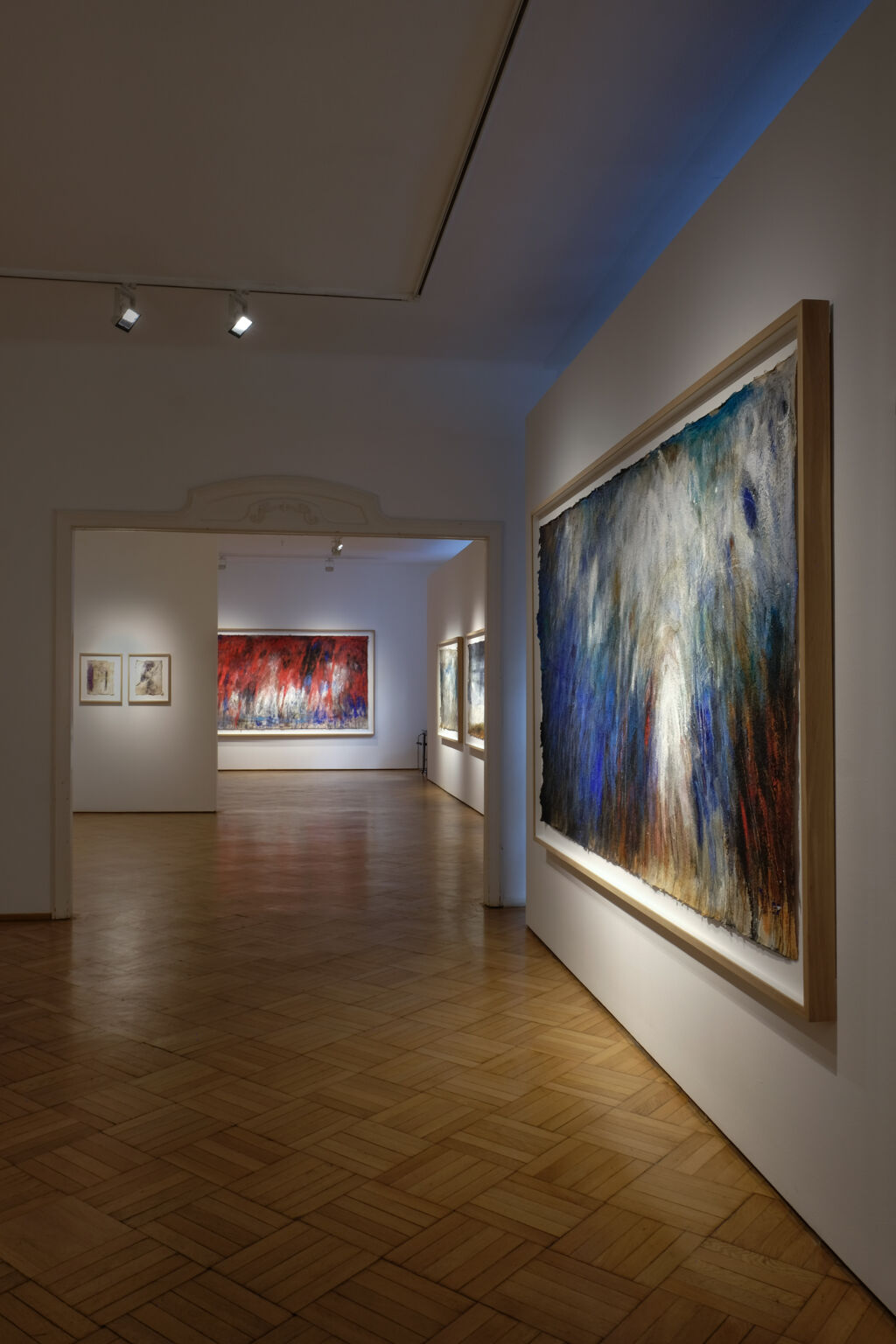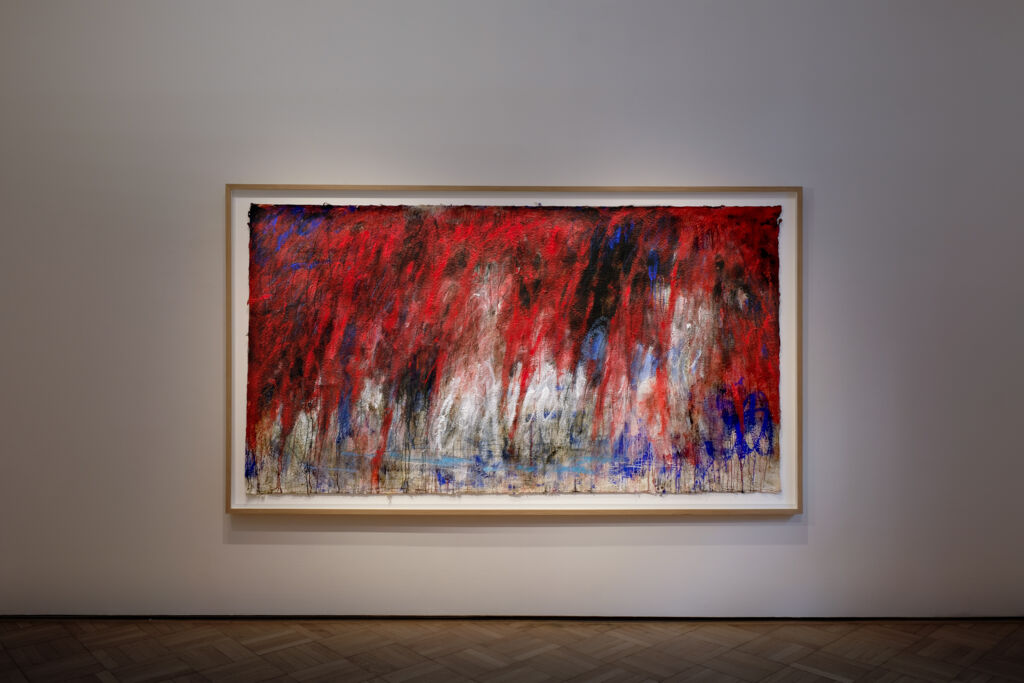
Exhibition Review: A Glimpse of Memory and Time
"Paintings on paper, as expressive as they are lyrical. Paintings that touch us in a very particular way and reveal the ambivalence of our present moment - where the beauty of nature, its destruction, friendship, and war coexist side by side."
At first glance, Jakob Kirchmayr's works on paper are powerful gestures in paint. Landscapes, built from many layers of color, applied with broad and forceful strokes onto handmade paper from Nepal. This paper, produced without binding agents, absorbs the pigment like a sponge, creating the tactile surface so characteristic of his work. These are images born from an inner impulse, without preparatory sketches - and the intensity of that process is striking.

"A glimpse of memory and time", are flashes from the past, often bound to powerful emotions, which Kirchmayr translates masterfully into painting. His gestural marks unfold across the surface like musical rhythms: from dynamic crescendos to delicate pianissimos, creating at times a tense, resonant energy on paper. It is as if the artist were introducing us to life's contradictions.
Titles such as "The day is endless, it loses itself in its brightness" or "The stones change their color every hour" are not merely landscape observations. They resonate with melancholy and longing. They could just as well reflect an inner state of mind or the condition of the world echoing Nikolaus Lenau's poetry: "The whole world is despairingly sad. "And yes, there is also anger and helplessness in these works.
The paintings are metaphors and projections. As Angelika Seebacher has written, one is "inclined to read them also as portraits of the collective state of mind of their time." Over the years, Kirchmayr has witnessed the destruction of nature. "Gradually, melancholy, sadness, and anger over global injustice and the ruthlessness of the system we live in have entered his work," Seebacher notes.

Inspiration for his paintings comes through poetry, especially that of Greek author Jannis Ritsos. Ritsos combined political messages with powerful visual imagery, texts shaped by his biography, by years spent in prison camps, and by the poems he wrote near the end of his life in the knowledge of farewell: "The Reverse Images of Silence." Throughout his life, Ritsos remained a humanist voice, his poetry an ode to freedom.
Much in Ritsos' writing, Kirchmayr observes, can be directly applied to the present, with its everyday violations of human rights: "His rich, metaphorical language often reads like a shocking déjà-vu." These words quite literally inscribe themselves into the paintings. In this exhibition, Kirchmayr refers to a letter written by Ritsos in 1950 from his place of exile to his brother. Arrested in 1948 with thousands of others, Ritsos was deported to the island of Agios Efstratios:
My dear Joliot,
I am writing to you from Aji-Strati.
We are about three thousand here,
simple people, hardworking and eager to learn,
a tattered blanket on our shoulders,
with an onion, five olives, and a crust of bread in our satchels,
simple people like trees in the sun,
people who have committed no greater crime than,
like you, loving freedom and peace ...
Jannis Ritsos